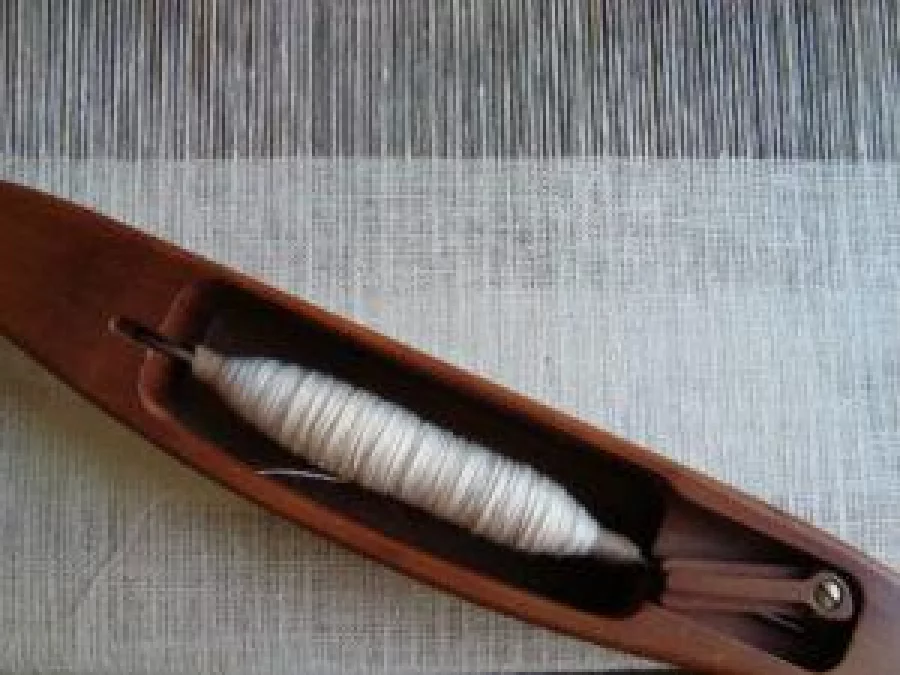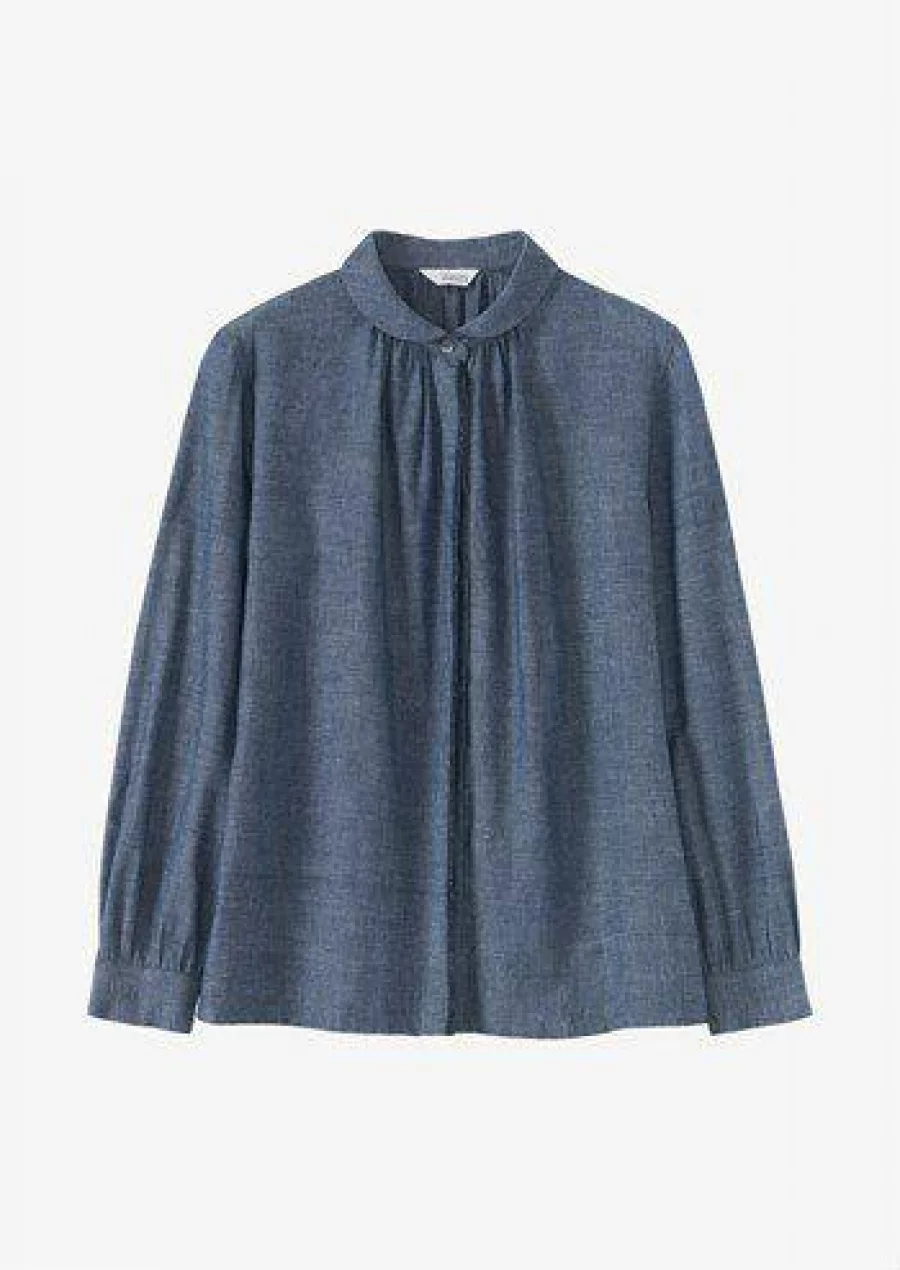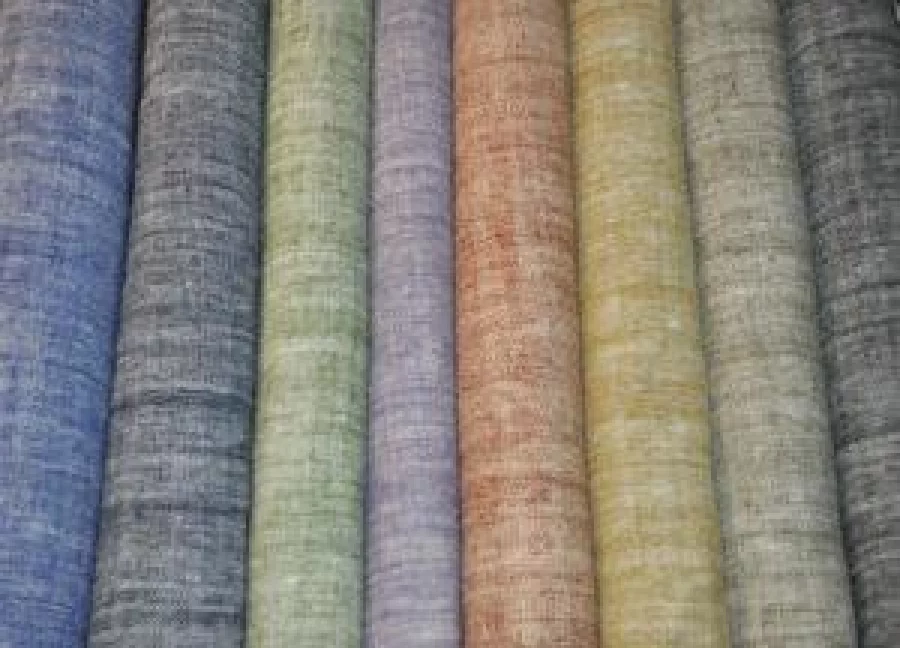Maria Sultana Mumu, owner of Mumu Maria and executive member of Fashion Design Council of Bangladesh (FDCB), with seven years of fashion designing experience under her belt, talks about how deshi fabrics are still struggling to find their footing in our fashion industry.
You have been involved with FDCB’s khadi project for a while now. What do you feel have been the biggest achievements so far?

Exposure – that’s the biggest one out of the lot. Khadi has been neglected for the longest time. Among the few misconceptions that surround khadi, the biggest one is probably that people always consider it as a thick, outdated, winter wear, which isn’t true. Next, khadi was always believed to be a lost heritage, which isn’t entirely wrong either.
We have managed to debunk some of these misconceptions through the work we’ve put together in the three consecutive khadi festivals, starting from 2015. The initiative was taken by FDCB’s founder president Maheen Khan.
Khadi can be made into partywear. There are different forms and versions of khadi, which can sometimes be woven with different counts of threads to bring variations in its texture.
The more we continue to experiment with the designs, textures and mixes of this fabric, the more interesting it gets.
What are the obstacles standing in the way of this being a bigger movement?
Through the festivals organized in the previous years, we’ve managed to bring a lot of attention to khadi – one of our precious, traditional fabrics. And ever since, many designers have made khadi an integral part of their collection home and abroad. We have also invited many foreign designers and officials from several embassies, MNCs and NGOs to our shows, for them to know more about this fabric. Trends are being created surrounding it; more and more people are picking khadi as their favourite fashion staple.
However, we also have more projects in the pipeline to work on. Muslin, jamdani, nakshi kantha are to name a few.
[gallery columns="2" size="medium" ids="258067,258063"]
How can khadi fashion be made more accessible to the general population?
Our initiatives so far may have helped khadi gain popularity among certain groups of people, but without government assistance, it really is difficult for khadi to sustain.
Khadi taantis (weavers) are looking to quit and work in other industries. We can’t blame them; it’s hard to keep faith and be motivated when you work hard day and night to make something that doesn’t have any market demand.
Indian, Pakistani, Korean and Chinese fabrics, especially their three-piece suits which are sold online, through Facebook pages, are also allowed to enter our market without paying VAT and taxes. These countries already have the upper hand because their labour is cheaper and they’re technologically ahead of us.

I wish there were more local companies like Epyllion Group and Beximco producing fabrics for us, especially fabrics like khadi, cotton, taant, muslin, silk, etc, or they really will be lost in time.
Where does Bangladesh fit into the global fashion scene?
Many foreign brands rely on our garments industry but we haven’t really found our footing in the global fashion scene yet. We also export yards of jamdani to Japan, but not too many people know about it.
Even though we have so many creative heads in the fashion industry, in all honesty, we lack the education and expertise needed to compete with foreign brands. But with more and more people enrolling in fashion schools, we are hopeful that things will change.

How important is it for our local brands to incorporate deshi fabrics in their collection?
It is absolutely mandatory to incorporate deshi fabrics in our collection. But considering that prices of fabrics like muslin or jamdani start from Tk400 per yard, the costing of the designer-wear goes unreasonably high, when compared to the prices of the imported chiffon georgette, linen, silk, etc. They are roughly priced at Tk150 per yard.
If we were given the option to buy deshi fabrics at reasonable prices and had more types of fabrics to choose from, let me assure you that no one would go for imported fabrics.
 Exposure – that’s the biggest one out of the lot. Khadi has been neglected for the longest time. Among the few misconceptions that surround khadi, the biggest one is probably that people always consider it as a thick, outdated, winter wear, which isn’t true. Next, khadi was always believed to be a lost heritage, which isn’t entirely wrong either.
We have managed to debunk some of these misconceptions through the work we’ve put together in the three consecutive khadi festivals, starting from 2015. The initiative was taken by FDCB’s founder president Maheen Khan.
Khadi can be made into partywear. There are different forms and versions of khadi, which can sometimes be woven with different counts of threads to bring variations in its texture.
The more we continue to experiment with the designs, textures and mixes of this fabric, the more interesting it gets.
Exposure – that’s the biggest one out of the lot. Khadi has been neglected for the longest time. Among the few misconceptions that surround khadi, the biggest one is probably that people always consider it as a thick, outdated, winter wear, which isn’t true. Next, khadi was always believed to be a lost heritage, which isn’t entirely wrong either.
We have managed to debunk some of these misconceptions through the work we’ve put together in the three consecutive khadi festivals, starting from 2015. The initiative was taken by FDCB’s founder president Maheen Khan.
Khadi can be made into partywear. There are different forms and versions of khadi, which can sometimes be woven with different counts of threads to bring variations in its texture.
The more we continue to experiment with the designs, textures and mixes of this fabric, the more interesting it gets. I wish there were more local companies like Epyllion Group and Beximco producing fabrics for us, especially fabrics like khadi, cotton, taant, muslin, silk, etc, or they really will be lost in time.
I wish there were more local companies like Epyllion Group and Beximco producing fabrics for us, especially fabrics like khadi, cotton, taant, muslin, silk, etc, or they really will be lost in time.

